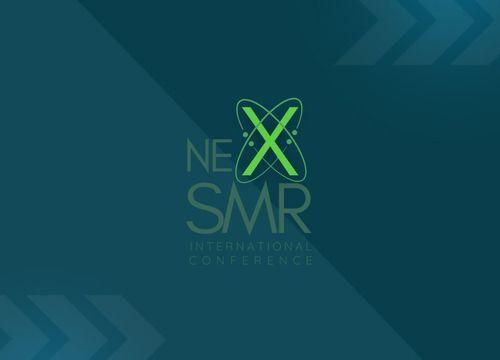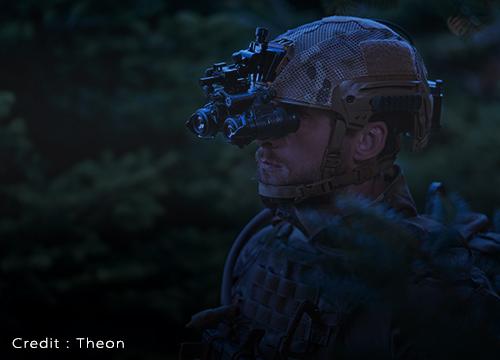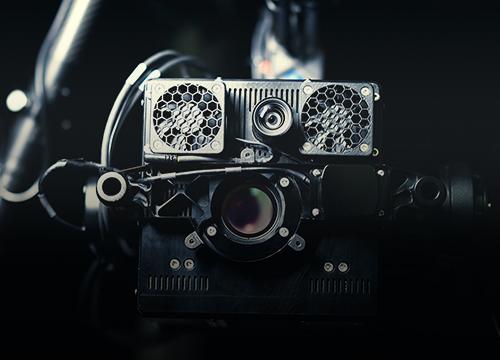Image Fusion: Enhancing Surveillance and Situational Awareness
Introduction
Exosens stands out as a leading innovator in infrared sensing technology. designing and manufacturing high-performance infrared sensors, cores, and cameras., pushing the boundaries of advanced imaging. As part of the Exosens family, Xenics offers cutting-edge Short Wave InfraRed (SWIR) and uncooled Long Wave InfraRed (LWIR) solutions, serving a wide range of markets and applications.
SWIR Imaging
SWIR cameras provide significant benefits in environments with challenging atmospheric conditions such as rain, dust, snow, fog, and mist. Unlike other imaging technologies, SWIR is unaffected by heat haze and atmospheric variations, ensuring consistent image quality. This makes SWIR an excellent choice for surveillance operations. SWIR cameras can see through glass and distinguish between artificial and organic material (skin, hair), making them effective for facial recognition and camouflage removal in various environments. Additionally, SWIR imaging can penetrate colored glasses and perform well in low-light conditions. Identifying moving objects, such as boats or cars, at ranges over 30 kilometers is crucial for surveillance and monitoring threats in challenging geographic locations like mountains and seas. Traditional visual optics are limited to around 13-16 kilometers in good weather, but long-range SWIR is only limited by the magnification power of the optics used. SWIR cameras can also achieve very high speeds, reaching thousands of frames per second, making them extremely useful for monitoring fast-moving objects. In addition, SWIR cameras enable accurate LASER spots detection and identification.
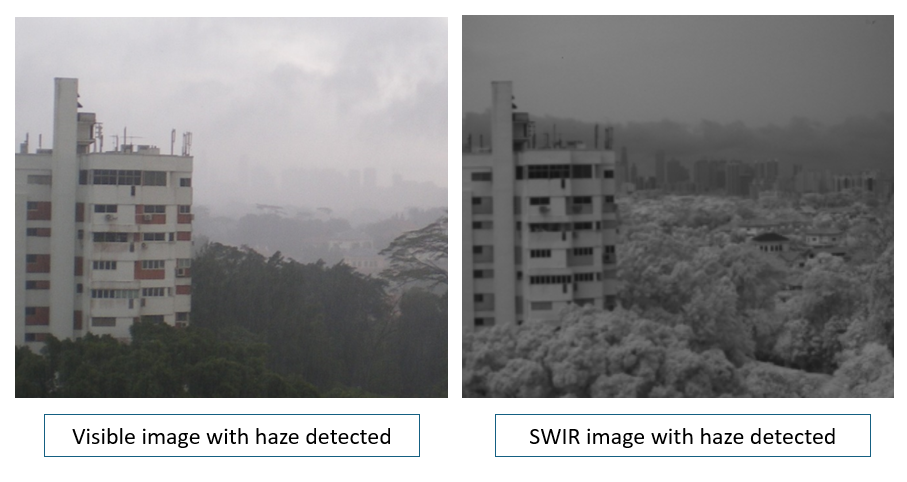
LWIR Imaging
LWIR cameras operate at 8 to 12 μm and can detect heat sources, such as hot engine parts or human body heat, several kilometers away. They assist pilots and drivers in navigating vehicles at night and in fog, and they can detect warm objects against cooler backgrounds. LWIR radiation has good transmission properties through atmospheric conditions like fog, smoke, and dust. However, longer-distance viewing is more challenging with LWIR due to absorption, scattering, and refraction by air and water vapor. Thermal imaging cameras are used in various applications, including naval vessels, fixed-wing aircraft, helicopters, Drones or UAV and armored fighting vehicles. By detecting thermal signatures, LWIR cameras enhance surveillance, targeting, and situational awareness, providing military forces with a significant advantage. LWIR is suitable for long-range surveillance, border security, and search and rescue operations. LWIR cameras detect heat signatures, allowing operators to identify individuals, vehicles, and other targets even when obscured. Additionally, LWIR technology enhances targeting and guidance systems, ensuring precise target acquisition and tracking for guided munitions and missile systems. Their integration into Unmanned Aerial Vehicles (UAVs) enables threat detection and countermeasures while minimizing misidentification, ensuring accuracy in complex environments.

Image Fusion of SWIR and LWIR
In the Marseus (“Modular ARchitecture Solution for EU States”) European Defence Fund (EDF) 2021 project, Exosens explores, with its leading product brand Xenics, the possibilities of image fusion using SWIR and LWIR wavelengths. Both spectral ranges have their advantages and disadvantages, which can be mitigated by combining images from both. While LWIR is well-established in military equipment, SWIR has limited applications in the military domain. However, SWIR technology is increasingly being integrated into military equipment due to its superior imaging capabilities in harsh environments.
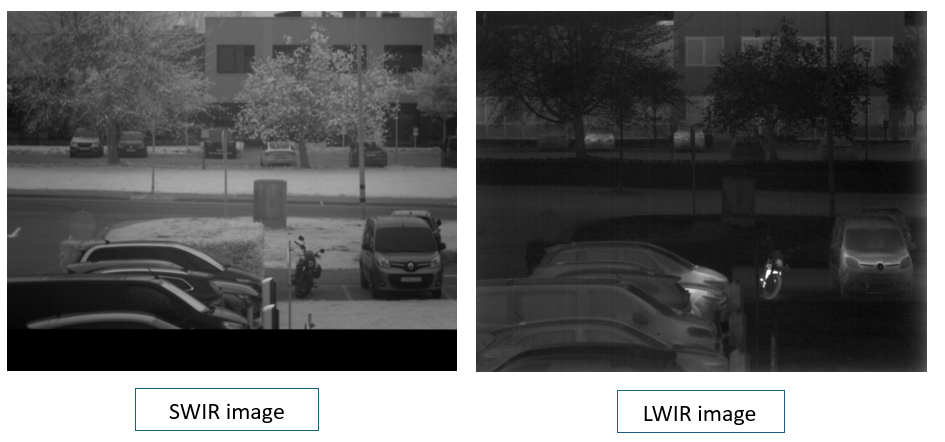
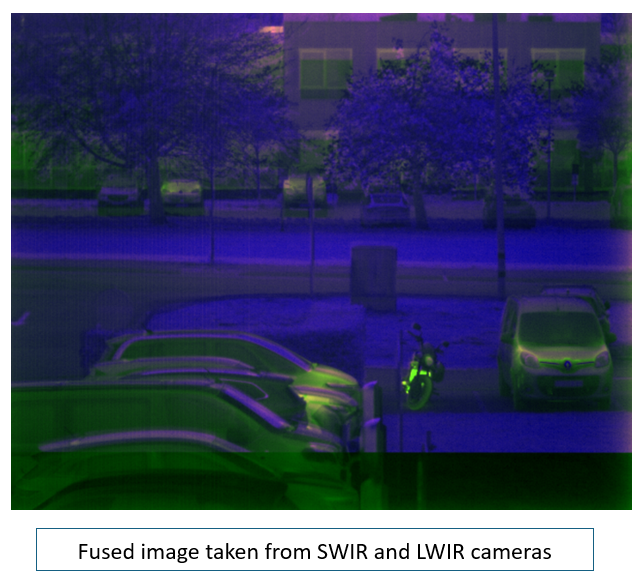
Combining SWIR and LWIR images offers several advantages, particularly in enhancing visibility and situational awareness. SWIR imaging is effective in all weather conditions, including fog, rain, and smoke, and can operate both day and night. LWIR imaging excels at detecting thermal radiation. Image fusion improves contrast and detail by combining SWIR's ability to capture clear details through atmospheric obscurants like smog and haze with LWIR's thermal contrast. This results in images with both high spatial resolution and thermal information. Additionally, combining the reflective properties of SWIR with the emissive properties of LWIR enhances target detection and identification, which is valuable for surveillance and reconnaissance.
Challenges of SWIR and LWIR Image Fusion
Despite the advantages, there are notable challenges associated with SWIR and LWIR image fusion:
Cost: for achieving optimum performance, SWIR cameras and sensors require specialized materials like Indium Gallium Arsenide (InGaAs), implying a costly production process. That results in relatively expensive technology to implement and adds to the overall weight of the integrated system. However, Signal-to-noise (SNR) and sensitivity being critical in these applications for best detection and vision capabilities,
Complexity: The fusion process requires sophisticated algorithms and processing techniques to effectively combine images. Depending on the complexity and formats of the data collected, the computational load can be extensive and expensive.
Resolution Limitations: LWIR cameras suffer from diffraction-limited resolution, resulting in blurry images that can affect the overall quality of the fused image.
Calibration Challenges: Ensuring accurate calibration between SWIR and LWIR sensors is challenging, as they operate on different principles (reflective vs. emissive). This can lead to discrepancies or artifacts in the fused image.
Conclusion
Despite the challenges, the benefits of combining SWIR and LWIR images outweigh the drawbacks, especially in applications requiring enhanced visibility and detailed thermal information. In the Marseus project, our team develops an algorithm to align images and videos from multiple cameras. The image fusion results are most effective in long-range imaging when cameras are focused at infinity, and the depth of view is assumed to be the same for all objects. Close-range image fusion remains challenging due to shifts in the depth of view, leading to potential artifacts and ghosting. The algorithm proved useful for surveillance and monitoring in long-range imaging, adding value to marine and drone surveillance.
Acknowledgments
Special thanks to the European Defence Fund for supporting this study in the Marseus (“Modular ARchitecture Solution for EU States”) project and to our project partner Novadem for their collaboration.

This study was Funded by the European Union. Views and opinions expressed are however those of the author(s) only and do not necessarily reflect those of the European Union or the Directorate General | Defence Industry and Space. Neither the European Union nor the granting authority can be held responsible for them.


